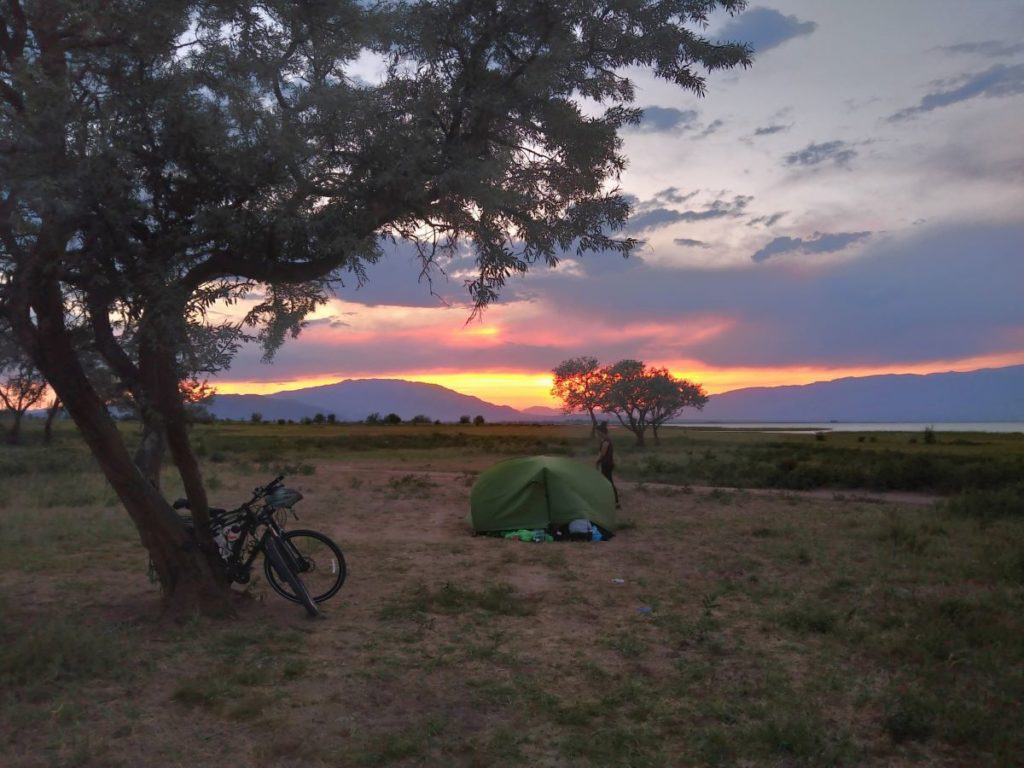The uncertainty of where you will sleep tonight is a part of the adventure and, simultaneously, one of the most stressful aspects of bicycle touring. People dreaming of bike travelling often ask: How do you find accommodation on your bicycle tours? Do you book a place to stay in advance? What do you do when there is nothing to camp?
In this short article, I share tools to find camping spots, hostels and other places to stay when I travel by bike. Hopefully, it will ensure you that finding accommodation on a bicycle tour is not that hard.
How to find camp spots during a bicycle tour?
One of my favourite things about bicycle touring is spending nearly all my time in nature. A cycling trip without camping always feels somewhat incomplete to me. But how do I find a good spot to pitch my tent?
When planning my ride for the day, I scan the map for the best area for wild camping.
I look for a flat surface, small side roads and sites far from settlements. This gives me a general idea of where I might find a decent wild camping spot.
I usually also change the view to satellite view and investigate if there are enough trees to hide a potential campsite from the road and, if I am lucky, even a water source like a lake or a river to wash myself up after the sweaty day on a bike.
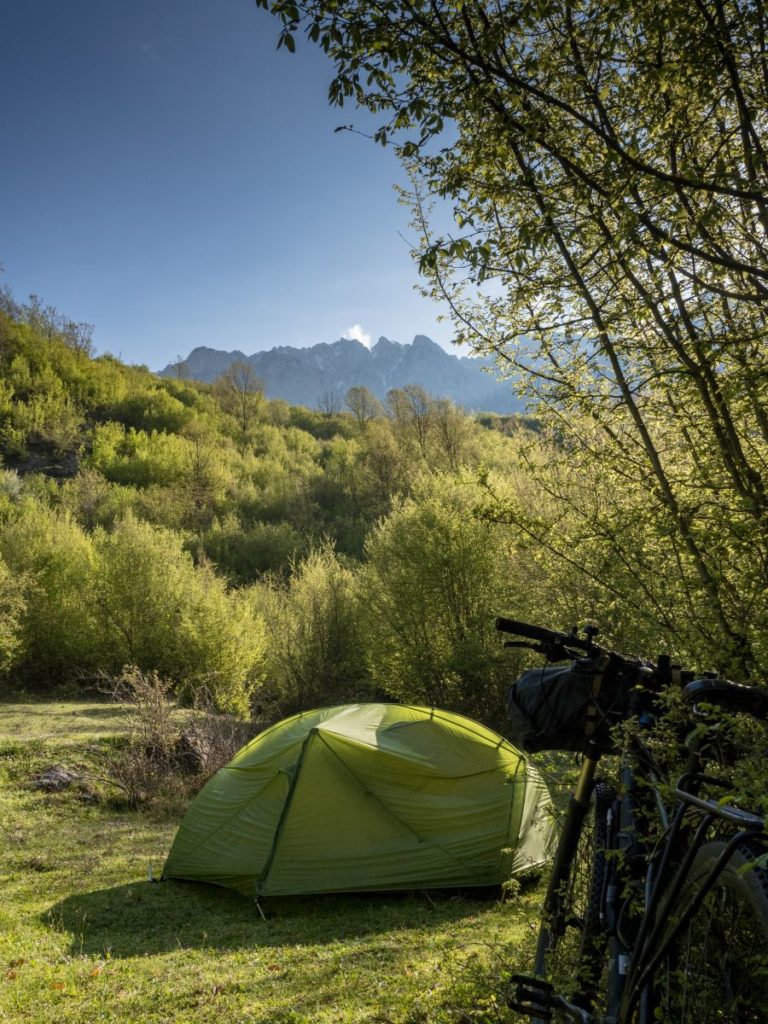
I leave a fair share of flexibility margin as places that seem perfect on the map sometimes turn out unsafe, dirty or surrounded by “private property” signs.
I plan my route so that I can arrive early enough to nose around to find a spot that is not only cosy but also safe (I prefer to use small tracks and trails that make a place inaccessible by car) and to have some time to find a backup plan.
I use Google Maps also to find official campsites. It’s not the best source of information, as not all campgrounds are marked on Google Maps, so I supplement it with two other apps:
iOverlander i Park4Night
iOverlander i Park4Night are two apps created by the RV and the Overlander community to share the best spots to camp. I use them frequently during my bicycle tours to research wild camping spots and find official campsites.
Both of these apps are simple when it comes to functionality and design. They are also free (park4night has a premium version for 9,99 USD to access the map online).
How do I use iOverlander and Park4Night during bicycle touring?
Usually, I check available spots in the area at the start of my day. I check for good wild camping spots and look at the pictures to see if they are suitable for a tent and not too close to the road. Both iOverlander and Park4Night are used mostly by motorists. Not all spots make sense for cyclists, especially those travelling alone like me.
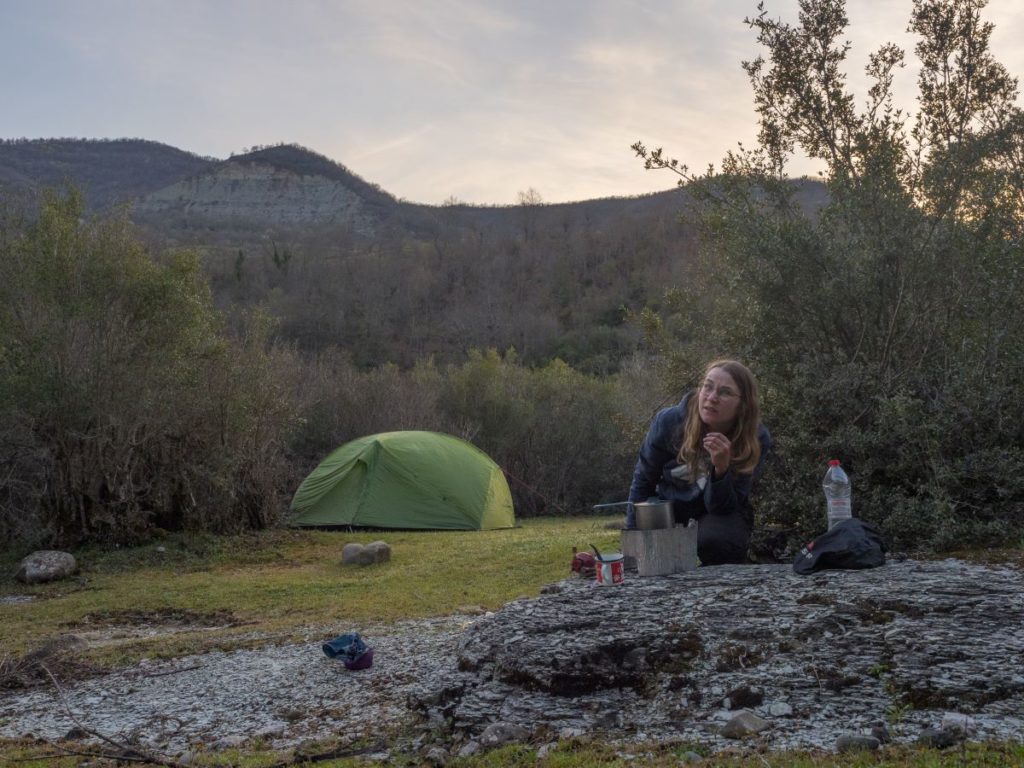
I save the spots in my regular navigation map to be able to locate them even if I end up without the internet.
I rarely stay exactly at the spots logged in the apps. Usually, I treat them as a starting point to look around the area and find something more secluded.
Read also my post about wild camping alone as a solo travelling woman.
I love wild camping, but sometimes a peaceful campsite with access to a proper shower is easier. Especially when I travel through densely populated areas where wild camping is not allowed.
iOverlander and Park4Night are also perfect for finding official campsites, especially the small private ones, without shiny white motorhomes. Using these apps, I found plenty of great campsites I would’ve never discovered relying on Google Maps only.
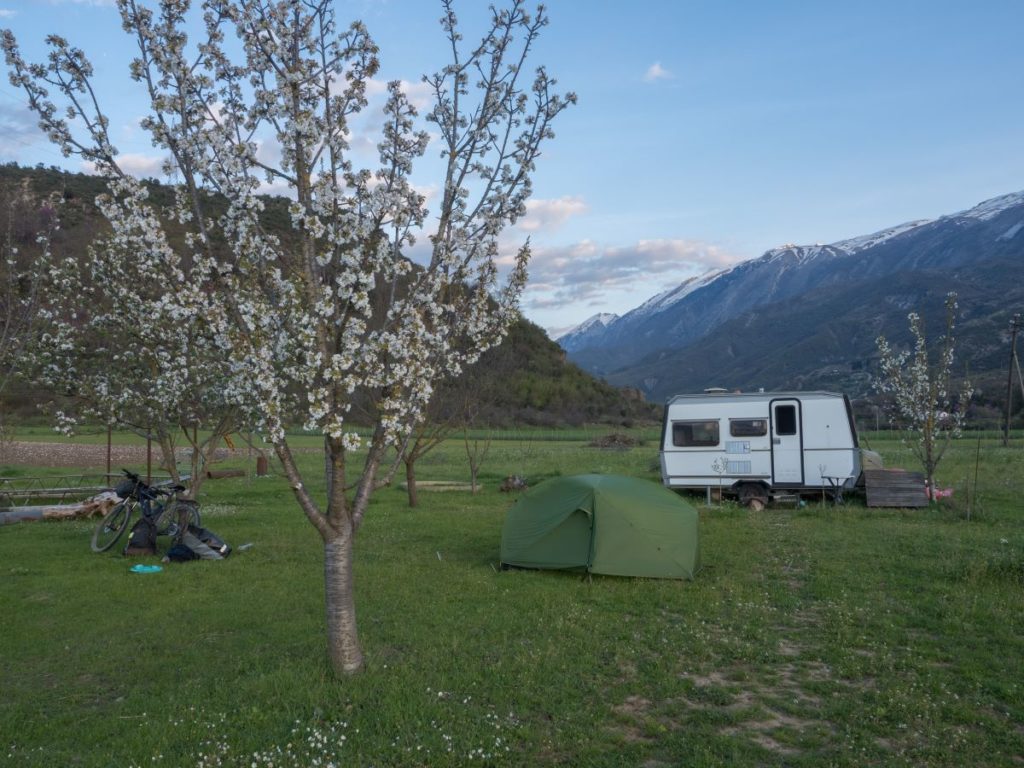
Check out also my article about wild camping in Europe where I include a lot of resources to find good camp spots in countries where wild camping is forbidden.
How to find hotels, hostels and other kinds of accommodation on a bicycle tour?
Camping is great, but sometimes you desperately need a night in a comfortable bed. My favourite way to find hotels, hostels and guesthouses when I am bicycle touring is booking.com.
It is simply the easiest way to find accommodation almost everywhere.
Pro tip: sometimes, to make sure all the money goes to the owner, I don’t book my stay on booking.com. I treat the website as a search engine to check if a place has free rooms. Then, I show up at the property without booking. This way, all the money goes to the owner. They don’t have to pay a commission to booking.com. It’s a great way to support local businesses.
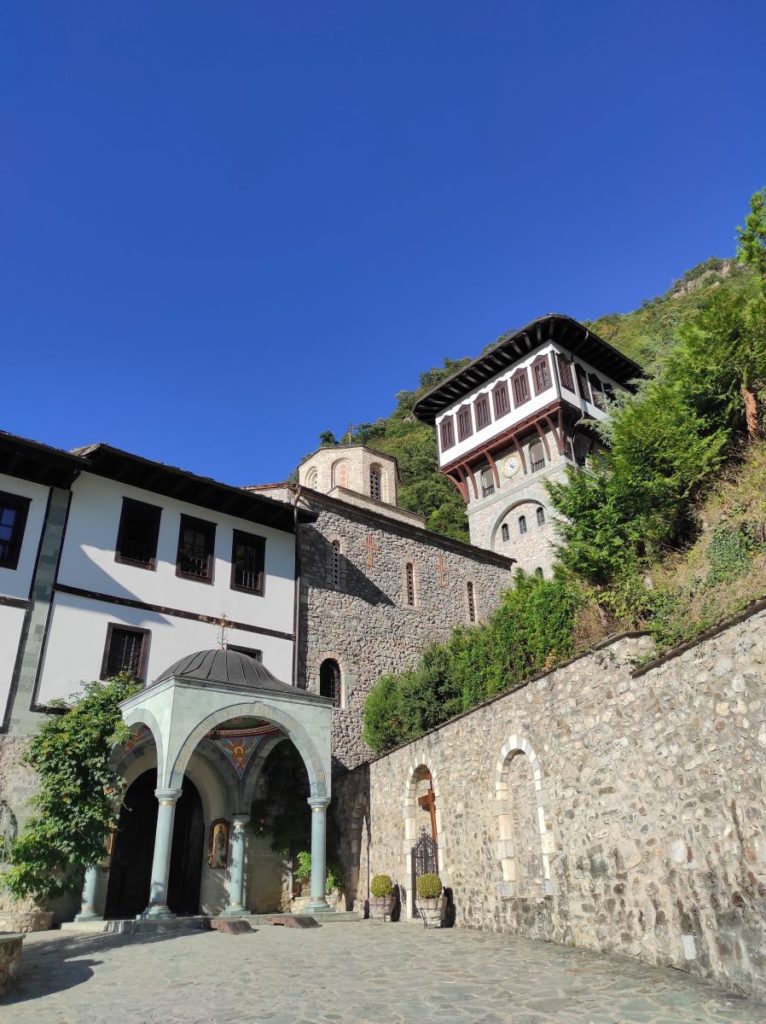
In bigger cities and more popular places, I also check hostelworld.com. Sometimes you can find cheap hotels there that aren’t on booking. Here also, unless I am visiting during a busy period and cannot risk not finding a place to stay, I try to avoid booking through the platform. This way, the hostel owners get around 10 % more.
There is also plenty of properties that don’t use online booking platforms. Often, they will be cheaper and can give you more authentic interactions with locals. That’s why I try not to rely exclusively on the internet and take advantage of word of mouth, asking people and encountered travellers for recommendations for guest houses and hotels.
Hospitality Networks
If you’re a solo traveller in desperate need of social interaction or want to get to know the local culture better, instead of just throwing yourself down on a bed and recovering after the ride, try hospitality networks like CouchSurfing, Welcome To My Garden or WarmShowers.
It will require a tad more planning, as most hosts prefer to know in advance that they will have visitors, but it is a terrific way to enrich your trip and make it more unique.
How to use hospitality networks during bicycle touring? Take time before your trip to create a compelling profile so your future hosts can learn something about you. Always send personalised and polite messages and not just dull hosting requests. Have a backup plan – sometimes you have bad luck, and all the local hosts are unavailable during your visit.
Możesz read more about staying with locals on a bicycle tour here.
How do you find accommodation when travelling by bike? Share your tips and resources in the comments!
